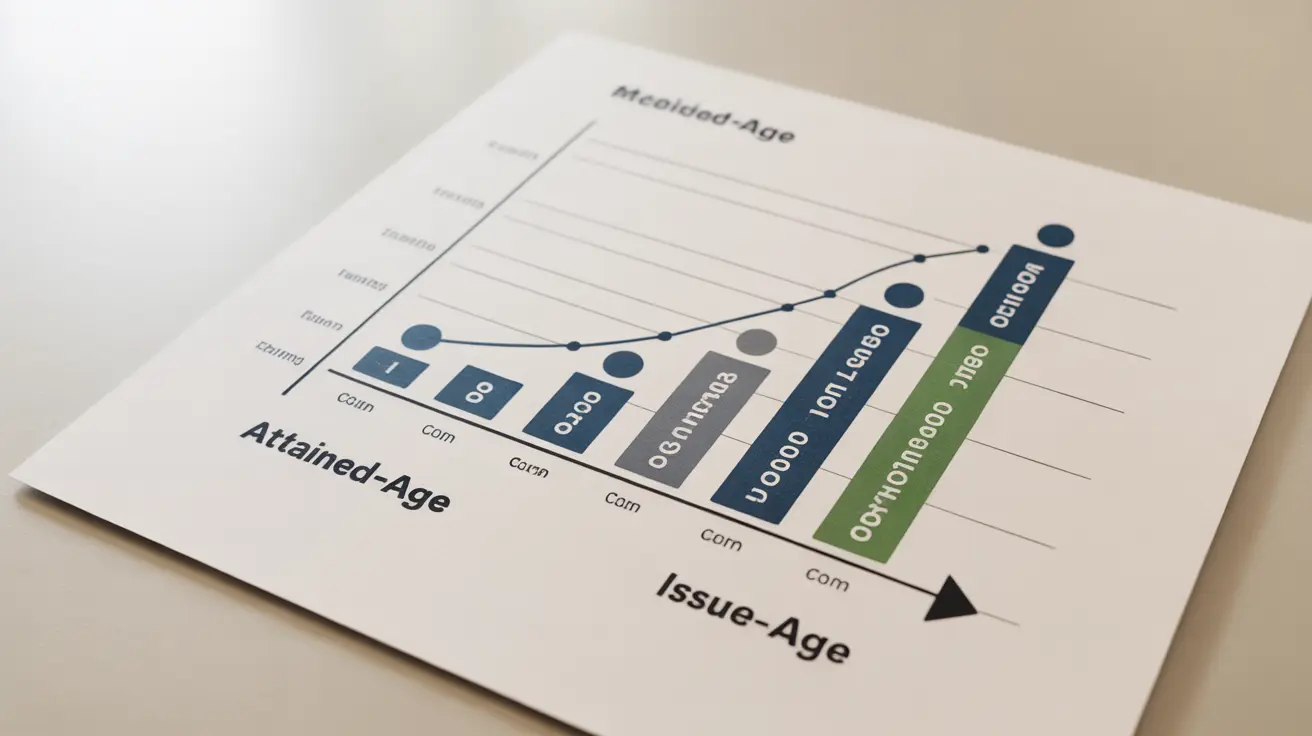When exploring Medicare Supplement Insurance (Medigap) options, understanding the difference between attained-age and issue-age policies is crucial for making an informed decision about your healthcare coverage. These two pricing methods can significantly impact your long-term healthcare costs and financial planning.
This comprehensive guide will help you understand how these pricing structures work, their key differences, and how to choose the best option for your situation.
How Attained-Age and Issue-Age Policies Work
Attained-age and issue-age policies represent two distinct approaches to calculating Medigap premiums. Each method has unique characteristics that affect how your premiums change over time.
Attained-Age Policies Explained
Attained-age policies base their premiums on your current age, meaning rates increase as you get older. These policies typically start with lower premiums when you first enroll but gradually become more expensive over time. Insurance companies usually adjust these premiums annually or every few years to reflect your advancing age.
These policies may also increase due to other factors such as inflation and medical costs, making them potentially more expensive in the long run despite their attractive initial rates.
Issue-Age Policies Explained
Issue-age policies determine their base premium rates according to your age when you first purchase the policy. While these plans generally start with higher premiums than attained-age policies, they offer more predictable long-term costs since they don't increase based on your age alone.
Although issue-age premiums won't increase due to aging, they may still rise due to inflation, medical costs, or other economic factors.
Geographic Considerations and State Requirements
Some states have specific regulations regarding Medigap pricing methods. For example, certain states require insurance companies to offer issue-age policies to protect consumers from age-based premium increases. States like Florida, Georgia, and Idaho have implemented such requirements to ensure more stable long-term costs for seniors.
Making Your Decision: Factors to Consider
Cost Comparison Over Time
When evaluating these plans, consider both short-term and long-term costs. While attained-age policies might offer lower initial premiums, issue-age policies could prove more cost-effective over an extended period, especially if you plan to keep the same policy for many years.
Your Age and Health Status
Your current age and health condition play crucial roles in determining which pricing method might work best for you. Younger seniors might benefit more from issue-age policies, while those who are older might find attained-age policies more suitable for their immediate needs.
Budget and Financial Planning
Consider your current budget and future financial situation. Issue-age policies offer more predictable expenses for long-term planning, while attained-age policies might better suit those who prioritize lower initial costs.
Frequently Asked Questions
What is the difference between attained-age and issue-age Medigap plans? Attained-age plans base premiums on your current age and increase as you get older, while issue-age plans set premiums based on your age when you first purchase the policy and don't increase due to aging.
How do premiums change over time with attained-age versus issue-age Medigap plans? Attained-age premiums increase regularly as you age, plus any inflation or cost adjustments. Issue-age premiums remain stable regarding age but may increase due to inflation or rising healthcare costs.
Which states require insurers to offer issue-age Medigap plans? Several states, including Florida, Georgia, and Idaho, require insurers to offer issue-age policies. Contact your state's insurance department for specific requirements in your area.
How do I decide if an attained-age or issue-age Medigap plan is better for me? Consider factors such as your current age, long-term financial planning goals, and how long you expect to keep the policy. Compare long-term costs and evaluate your budget for both immediate and future premium payments.
Can my Medigap premium increase with age if I have an issue-age plan? No, issue-age plan premiums don't increase based on your age. However, they may still increase due to other factors such as inflation, rising healthcare costs, or insurance company pricing adjustments.




